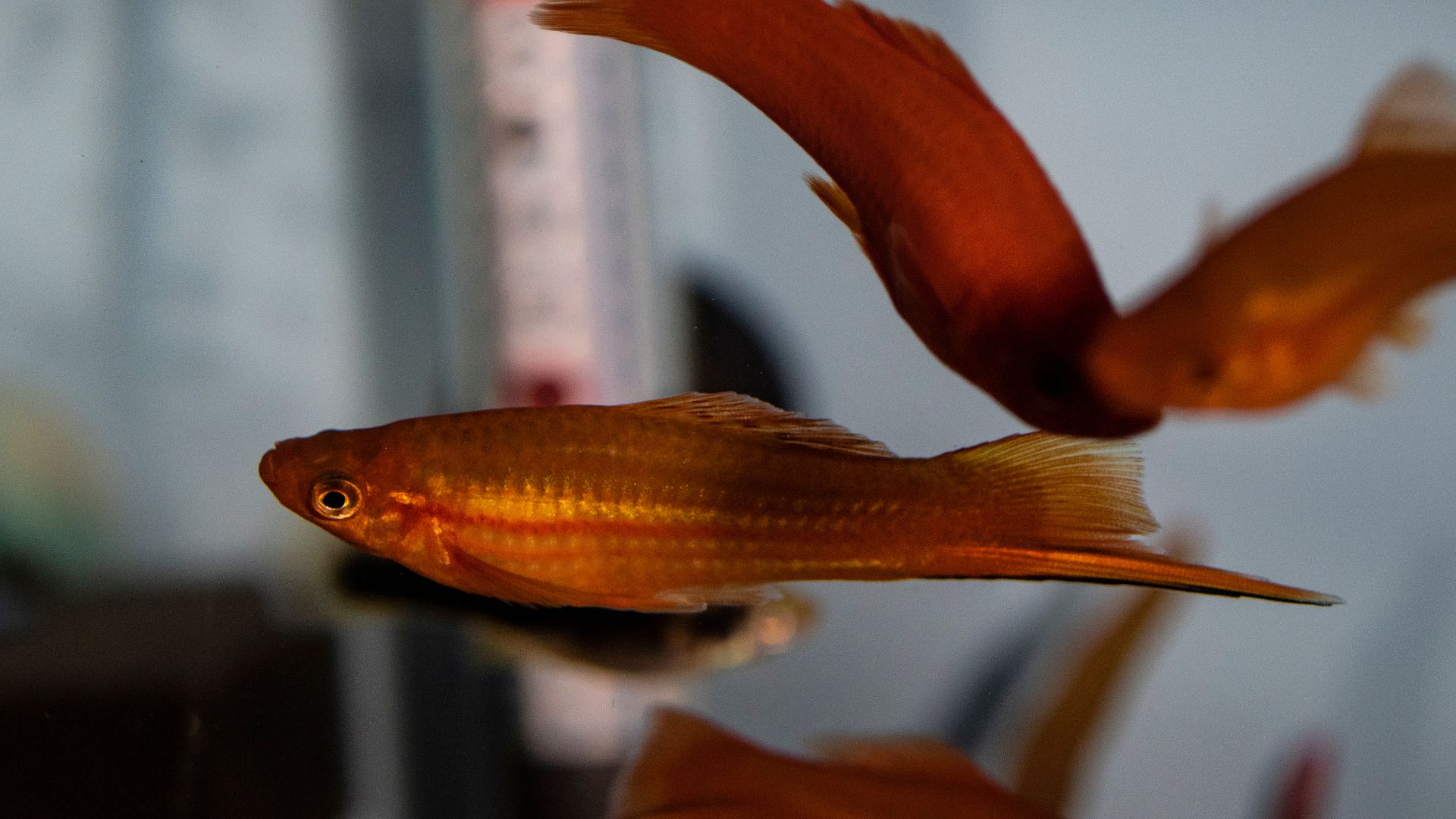
Swordtail
Scientific name: Xiphophorus helleri
The Swordtail is a popular freshwater fish native to the rivers and streams of Central America, particularly in Mexico, Guatemala, and Honduras.
Recognizable by the elongated lower lobe of the male’s tail fin—resembling a sword—the Swordtail adds dynamic movement and visual interest to any aquarium. Their hardy nature and adaptability make them suitable for both beginner and experienced aquarists.
IUCN Red List of Threatened Species : Least Concern
Swordtails are active swimmers that prefer a tank with plenty of open space as well as hiding spots among plants. They are social fish and do well in groups, although males can be territorial. It’s recommended to keep a ratio of multiple females to one male to reduce aggression and stress.
They are omnivorous and will accept a wide range of foods, including high-quality flake food, pellets, and live or frozen foods like brine shrimp and bloodworms. Their peaceful nature makes them compatible with a variety of tank mates, making them an excellent addition to community tanks.

Navite Location
Central America (Mexico, Guatemala, Honduras)
Varieties
Standard / Red / Green / Pineapple / Black / Lyretail / Hi-Fin
Suggested Tank Mates
Platies / Mollies / Guppies / Corydoras Catfish / Neon Tetras / Danios
Tank Mates to Avoid
Large or aggressive fish / Large Cichlids / Betta Fish / Any fish large enough to eat them
Diet
High-quality flake food / Pellets / Live or frozen foods (brine shrimp, bloodworms) / Vegetable-based foods (spirulina flakes)
Breeding
Swordtails are livebearers; females give birth to live, free-swimming fry after a gestation period of about 28 days. They breed readily in home aquariums. Providing plenty of hiding spots for the fry is important, as adults may eat them.
Lifespan
3 to 5 years with proper care
Size
Up to 14 cm (5.5 inches), with females generally larger than males
Minimum Tank Size
20 gallons (75 liters) for a small group
Optimum Tank Temperature
22°C to 28°C (72°F to 82°F)
Ideal pH Level
7.0 to 8.3
Water Hardness
12 – 30 dGH
Common Health Issues
Fin Rot / Ich (White Spot Disease) / Velvet Disease / Bacterial Infections / Parasitic Infestations
Interesting facts
They Are Livebearers
Swordtails give birth to live young rather than laying eggs, which makes breeding them in captivity relatively easy.
Sexual Dimorphism
Males possess the characteristic “sword” extension on their tail fins, while females do not. Additionally, males have a gonopodium, a modified anal fin used for reproduction.
Hybridization
Swordtails can interbreed with Platies (Xiphophorus maculatus), producing fertile offspring. This has led to a variety of color and fin shape variations in the aquarium trade.
Color Changes
Swordtails can change color intensity based on mood, health, and environmental conditions, similar to Neon Tetras.
They Can Jump
Swordtails are known to be good jumpers. Keeping a lid on the aquarium is advisable to prevent them from leaping out.
Variety of Colors and Forms
Selective breeding has produced Swordtails in a wide array of colors and fin types, including the popular Lyretail and Hi-Fin varieties.
Swordtail FAQ’s
Are Swordtails Livebearers?
Yes, Swordtails are livebearers. Females give birth to live, free-swimming fry after a gestation period of about 28 days.
They are prolific breeders and can produce broods of 20 to 100 fry at a time. Providing plenty of plants or breeding mats can help protect the fry from being eaten by adult fish.
